Student Runner Up
Health & Wellness Award
Core77 Design Awards 2019
hplus. Personal health monitoring devices
'hplus' is a collection of six personal health monitoring devices that aim to relieve the pressure on the patient, clinician and health service. Included within the collection is a spirometer, urine-analyser, and finger-prick blood tester, that together with the other devices are designed to provide accurate monitoring of nine major chronic health conditions.
The devices are designed to be simple and hassle-free to use by both young and old alike. With no digital readouts and minimal interfaces, an accompanying mobile application guides users through the testing procedures, while displaying results of recent tests alongside notes from their doctor.
For medical practitioners, the secure transfer of patient data to a centralised portal, gives a more frequent and accurate picture of their patients state of health; reducing the number of appointments a patient needs for check-ups, as well as the risk of misdiagnosis and over-medication.
Setting the hplus collection apart from other healthcare devices is a strong focus on materiality. The devices are designed to counter the current aesthetic of medical products; creating a visual warmth that gives users a sense of dignity through their use and ownership, all while grounding them in the domestic setting.
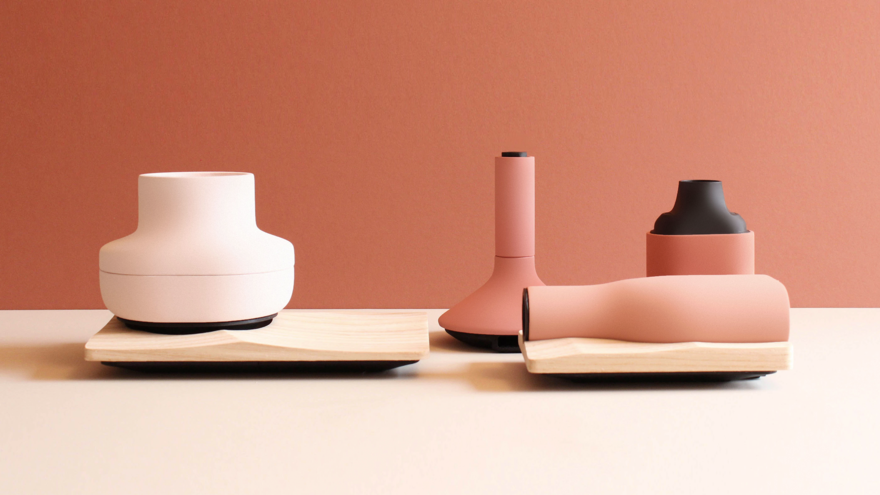 hplus Collection
The personal health monitoring devices that make up the hplus collection.
hplus Collection
The personal health monitoring devices that make up the hplus collection.
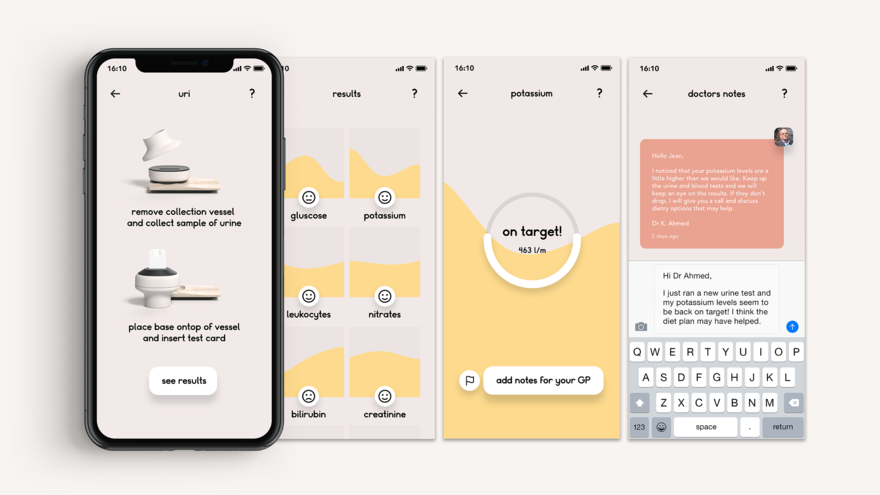 hplus Application 01
The hplus application guides users intuitively through the testing procedure.
hplus Application 01
The hplus application guides users intuitively through the testing procedure.
 hplus Application 02
Within the accompanying application, users can access their health data in a variety of ways.
hplus Application 02
Within the accompanying application, users can access their health data in a variety of ways.
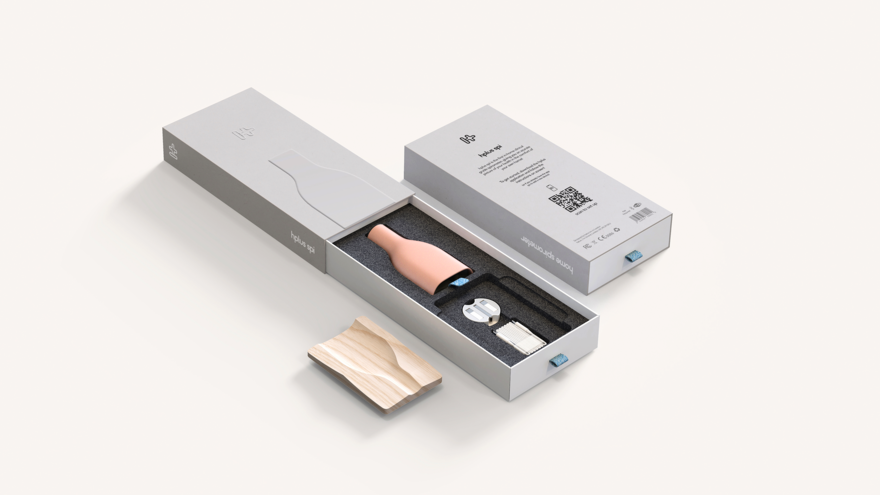 hplus Spi Packaging 01
The packaging of all the devices in the collection comes complete with everything you need to set up the device.
hplus Spi Packaging 01
The packaging of all the devices in the collection comes complete with everything you need to set up the device.
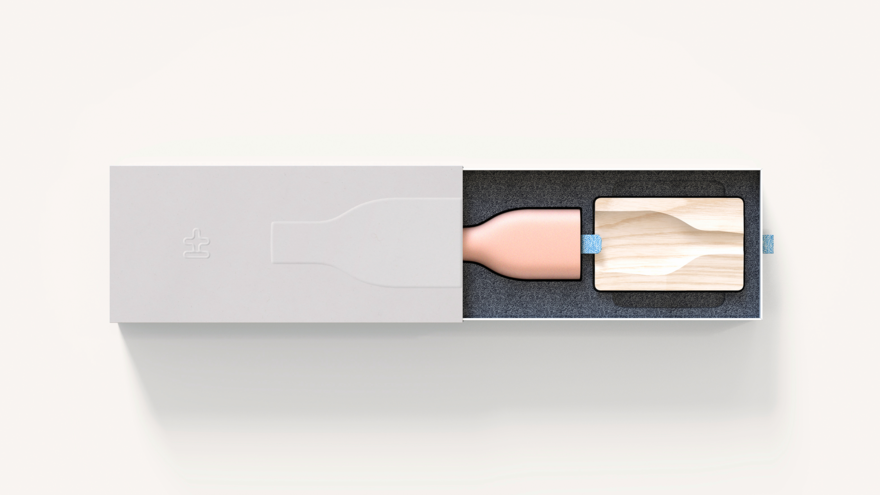 hplus Spi Packaging 02
The packaging of the products is designed to be as simple as the devices themselves.
hplus Spi Packaging 02
The packaging of the products is designed to be as simple as the devices themselves.
 hplus Packaging
Colour-coded fabric tabs on each box reference the colours used to distinguish devices within the application.
hplus Packaging
Colour-coded fabric tabs on each box reference the colours used to distinguish devices within the application.
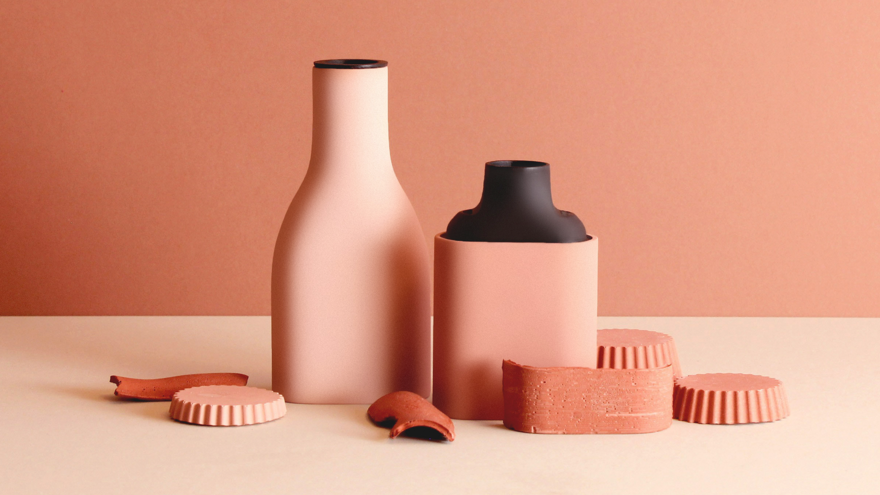 hplus Materiality
The materiality of the hplus collection is routed in the domestic environment, pairing slip-cast ceramics with CNC-milled ash charging bases.
hplus Materiality
The materiality of the hplus collection is routed in the domestic environment, pairing slip-cast ceramics with CNC-milled ash charging bases.
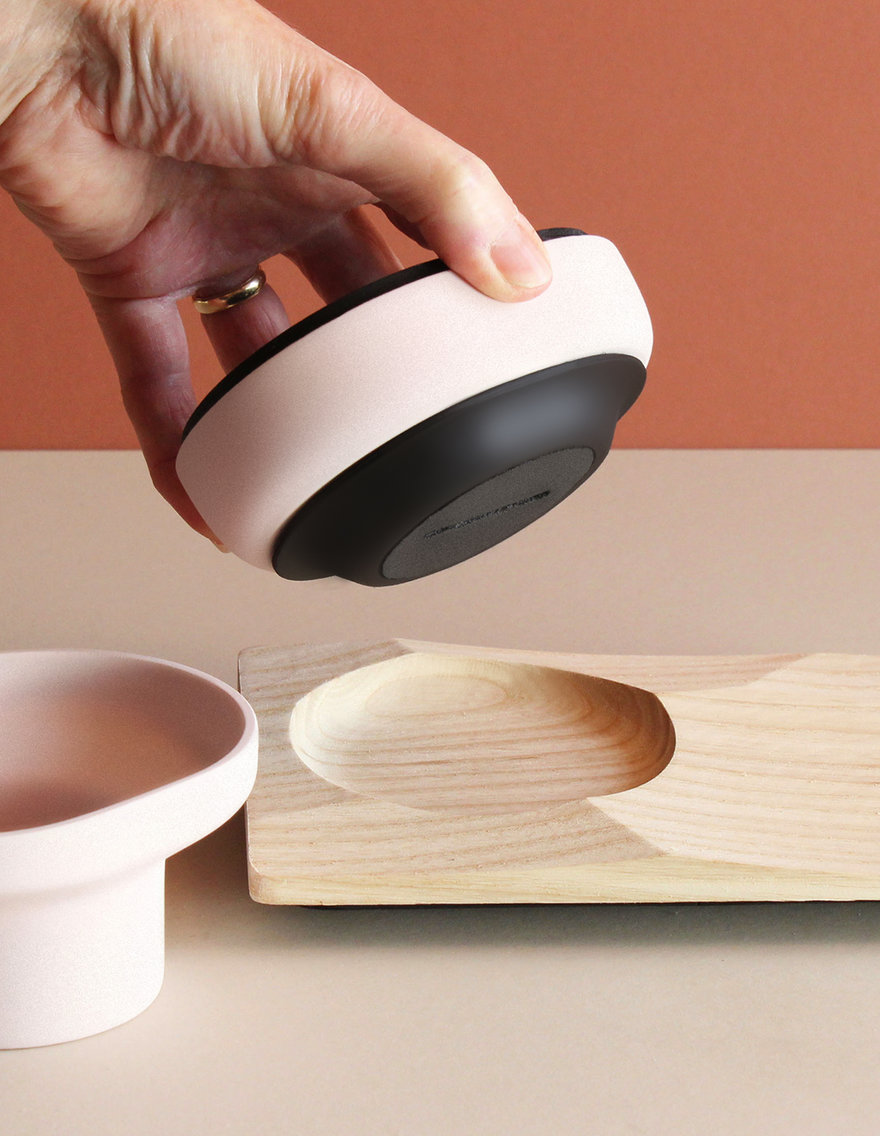 hplus Uri
hplus Uri is a home urine analysis device that provides clinical grade data within the home.
hplus Uri
hplus Uri is a home urine analysis device that provides clinical grade data within the home.
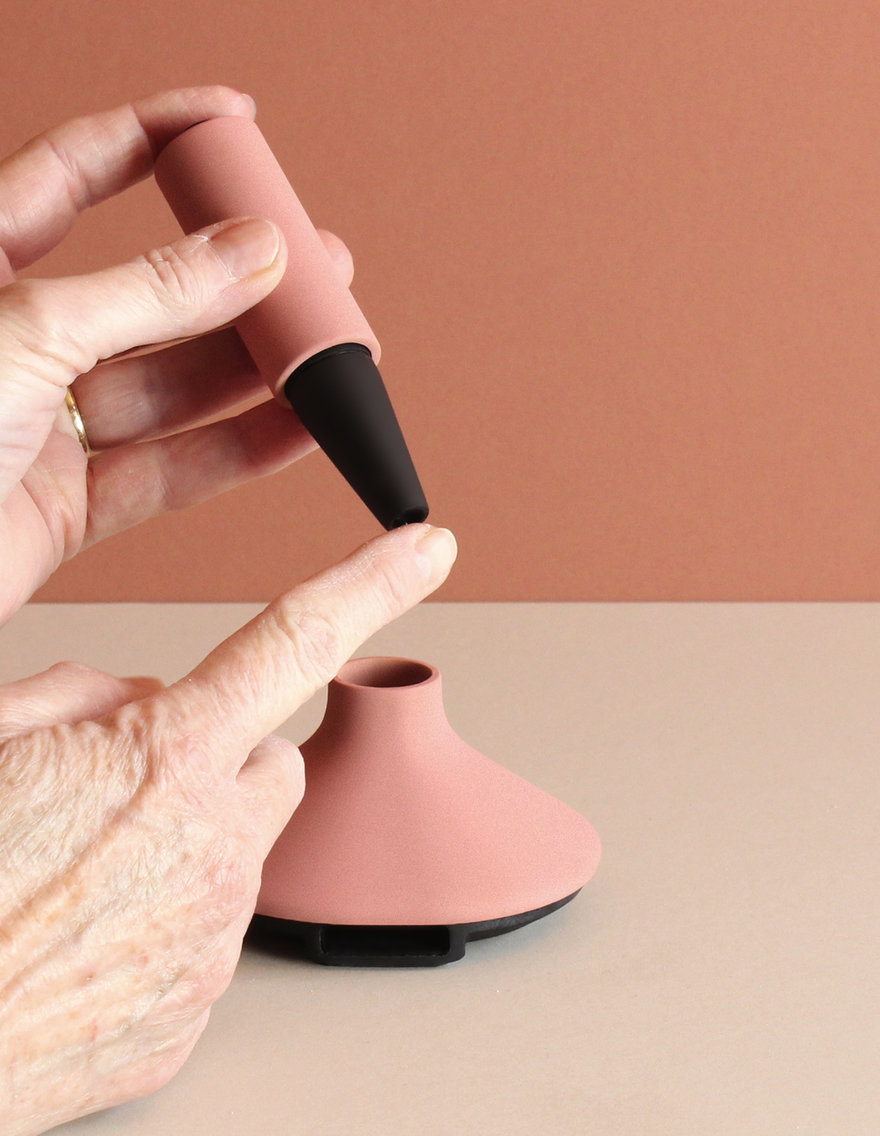 hplus San
hplus San gives users a full-spectrum blood test in only a few simple steps.
hplus San
hplus San gives users a full-spectrum blood test in only a few simple steps.
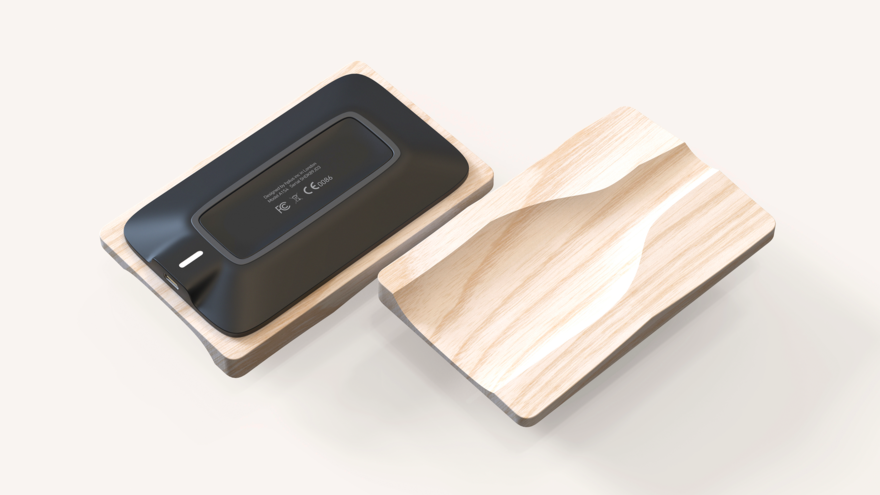 hplus Spi Charging Base
The reverse of each charging base includes a button that allows the device to be paired with the users mobile application.
hplus Spi Charging Base
The reverse of each charging base includes a button that allows the device to be paired with the users mobile application.
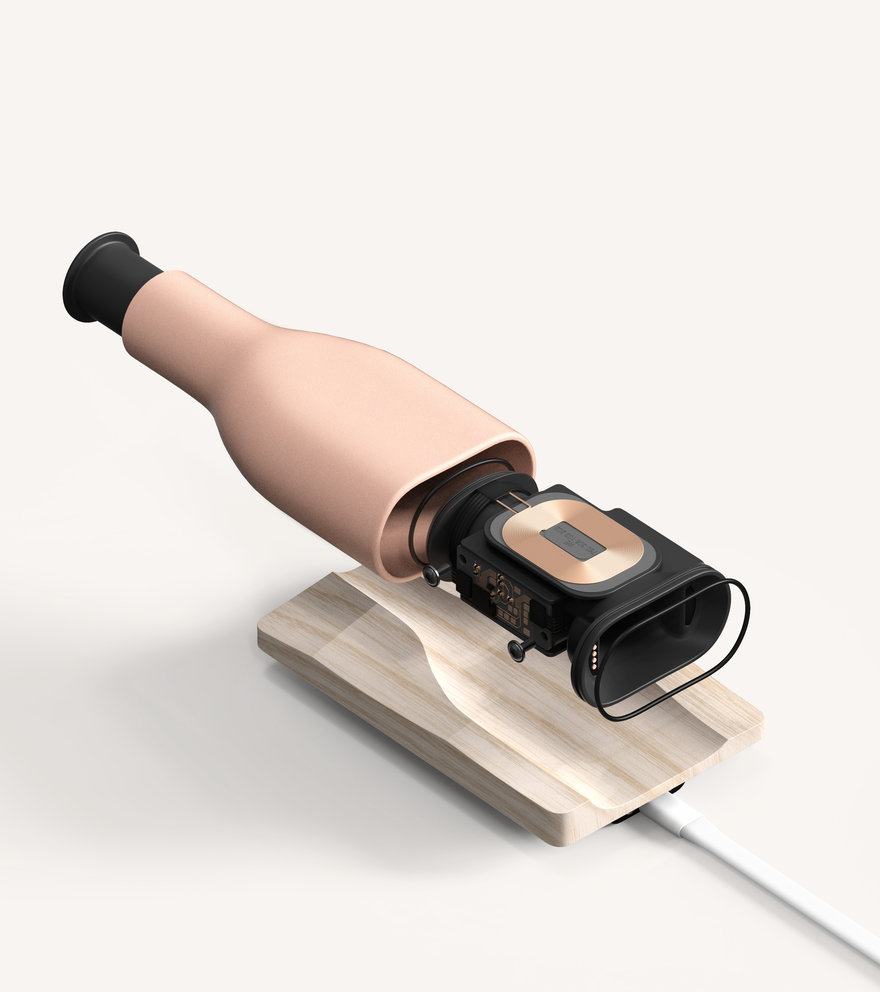 hplus Spi Components
The outer slip cast shell encases a polycarbonate chassis which supports all of the electronic components.
hplus Spi Components
The outer slip cast shell encases a polycarbonate chassis which supports all of the electronic components.
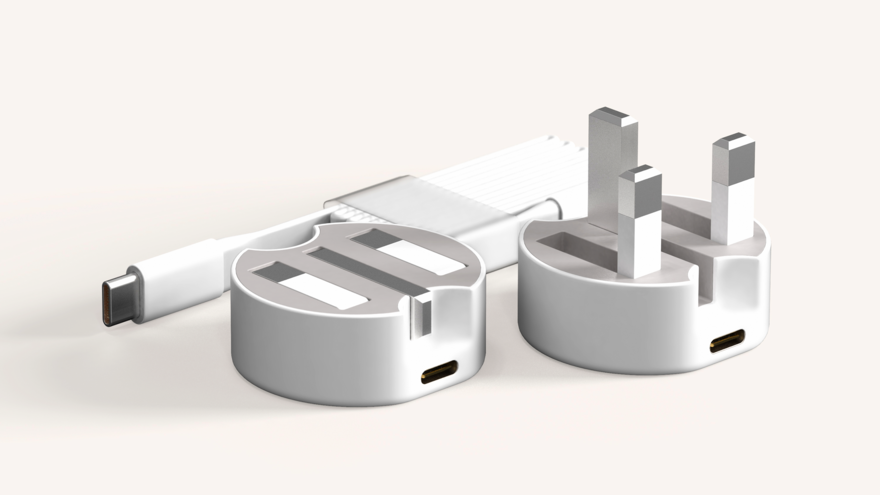 hplus Accessories
Each hplus device comes with a single tangle-free USB-C power cable and custom compact folding power adaptor.
hplus Accessories
Each hplus device comes with a single tangle-free USB-C power cable and custom compact folding power adaptor.
In the United Kingdom, around 15 million people live with chronic health conditions. With the burden of managing their care and treatment through the use of numerous monitoring devices and clinical appointments, their lives too often revolve around their condition.
It shouldn't be that way.
As a project, hplus started when I witnessed my own grandmothers battle with the complications of Type2 diabetes. In her final years, doctors visits for health checkups became an almost weekly occurrence, often with failed tests or inconclusive results warranting further assessments. I thought that there must be a better way to approach the monitoring of chronic health conditions. One of the biggest pressures I witnessed was the impact these clinical visits had on our family as a whole; with my mother having to take time-out to accompany my grandmother to the clinic. As a result I began to question why these checkups could not be done within the home. Three years of initial research into alternative monitoring tools for a variety of health metrics led to the formation of the hplus collection for my final graduation project; with each device using a combination of techniques to provide a comparable level of accuracy to tests performed in a laboratory, while being simple to use by a broad spectrum of patients within the domestic environment.
The devices within the collection include a urine-analyser, finger-prick blood tester, and combined spirometer and FeNo meter. They are removed of all but the most essential of physical interactions, ensuring that the user experience is streamlined and hassle free. This is achieved through the use of an accompanying mobile application that acts as the core user interface, handling data collection and test operations. Inside the app users select the test they want to perform and are then guided through the process of carrying out a successful clinical test.
When the GP prescribes a new device, users scan the barcode on its packaging, automatically starting the set up process within their app. In doing this, the process of setting up and learning a new testing procedure is simple and hassle-free.
After tests have been performed, users can view the results within the same application. Data is collated into simplified overviews that show how well a patient is progressing, with a more detailed analysis available when required. When a data set is at a dangerous level, it is automatically flagged and an alert is sent to both the patient and clinician. Alongside this, a patient - clinician interface creates a dialogue between the two, allowing users to easily raise concerns with their care team.
The core focus of the project has always been to challenge our thinking about the design of medical devices, bringing the aesthetic attention that we bestow on the objects we buy for our home to the devices we are given to manage our health. With each device produced from natural materials including slip cast ceramics and CNC milled ash, the goal is to change the way we interact with healthcare products. By changing the materials they are made from, it is possible to change the associations we give to them, and in turn, make them more acceptable in society and our daily lives.
It is my belief that good design and beautiful objects should not be out of the reach of the general public, especially when they are an essential part of their everyday lives.
Core77 Design Awards 2019
- Built Environment
- Commercial Equipment
- Consumer Technology
- Crowdfunding
- Design Education Initiative
- Design for Social Impact
- Furniture & Lighting
- Health & Wellness
- Home & Living
- Interaction
- Packaging
- Personal Accessory
- Service Design
- Speculative Design
- Sports & Recreation
- Strategy & Research
- Tools & Work
- Transportation
- Visual Communication